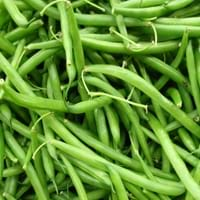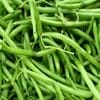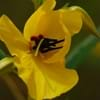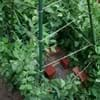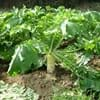Life Span
Annual
Annual and Perennial
Type
Vegetable
Bulb or Corm or Tuber
Origin
Central America, South America
Central America, South America
Types
Golden Wax Bean, Romano bean
Vine, Flowering plant
Habitat
Fields, orchards
All sorts of environments, Along Railroads, Banks, Moist Ditches, Roadsides, rocky banks of streams
USDA Hardiness Zone
Not Available
10-13
AHS Heat Zone
Not Available
12-1
Sunset Zone
A1, A2, A3, H1, H2, 1a, 1b, 2a, 2b, 3a, 3b, 4, 5, 6, 7, 8, 9, 10, 11, 12, 13, 14, 15, 16, 17, 18, 19, 20, 21, 22, 23, 24
21,22
Habit
Vining/Climbing
Vining/Climbing
Minimum Width
Not Available
Flower Color
White, Pink, Lavender
Purple, Rose
Flower Color Modifier
Bicolor
Bicolor
Fruit Color
White, Green, Dark Red, Tan, Black
Not Available
Leaf Color in Spring
Green, Purple, Dark Green
Purple, Dark Green, Black
Leaf Color in Summer
Green, Dark Green
Light Green
Leaf Color in Fall
Green, Dark Green
Several shades of Green
Leaf Color in Winter
Not Available
Light Green
Leaf Shape
Maple shaped
Acicular
Plant Season
Spring, Summer, Fall
Spring, Summer, Fall, Winter
Sunlight
Full Sun
Full Sun, Partial Sun
Growth Rate
Fast
Very Fast
Type of Soil
Loam, Sand
Clay, Loam, Sand
The pH of Soil
Neutral, Alkaline
Acidic, Neutral, Alkaline
Soil Drainage
Well drained
Well drained
Bloom Time
Indeterminate
Late Spring, Early Summer, Summer, Late Summer, Early Fall, Fall, Late Fall
Tolerances
Drought
Drought
Where to Plant?
Container, Ground
Container, Ground
How to Plant?
Seedlings
Cuttings, Leaf Cutting, Tuber propagation
Plant Maintenance
Medium
Medium
Watering Requirements
Do not let dry out between waterings, Use Mulches to help prevent water loss during hot and windy weather
Keep the Soil well drained, Needs very little water
In Summer
Lots of watering
Lots of watering
In Spring
Moderate
Moderate
In Winter
Average Water
Average Water
Soil pH
Neutral, Alkaline
Acidic, Neutral, Alkaline
Soil Type
Loam, Sand
Clay, Loam, Sand
Soil Drainage Capacity
Well drained
Well drained
Sun Exposure
Full Sun
Full Sun, Partial Sun
Pruning
Remove damaged leaves, Remove dead branches, Remove dead leaves
Remove damaged leaves, Remove dead branches, Remove dead leaves
Fertilizers
All-Purpose Liquid Fertilizer
All-Purpose Liquid Fertilizer
Pests and Diseases
Free of serious pests and diseases
Red blotch
Plant Tolerance
Drought
Drought
Flower Petal Number
Single
Single
Foliage Texture
Coarse
Coarse
Foliage Sheen
Matte
Matte
Attracts
Aphids, Birds, Butterflies, Caterpillar
Aphids, Beetles, Cutworms, Insects, Mites, Whiteflies
Allergy
Diarrhea, Irritation to stomach
Abdominal pain, allergic reaction, Nausea, Skin rash, Twitching of face
Aesthetic Uses
Not Used For Aesthetic Purpose
Not Used For Aesthetic Purpose
Beauty Benefits
Making cosmetics, Remove blemishes
Not Available
Environmental Uses
Food for animals, No fertilizer, pesticides, or herbicides needed
Air purification
Medicinal Uses
Acne, Diuretic, Emmoiliant, Menstrual Disorders
Cures constipation, Fiber, Low calories, lowering blood pressure, Potassium, ß-carotene, Vitamin A, Vitamin C
Part of Plant Used
Fruits
Leaves, Root, Shoots, Stem, Tuber
Other Uses
Animal Feed, Used as a nutritious food item
Starch, Used As Food, Used as Ornamental plant
Used As Indoor Plant
Yes
Sometimes
Used As Outdoor Plant
Yes
Yes
Garden Design
Edible, Herb, Vegetable, Vine
Container, Edible, Groundcover, Hanging Basket, Herb / Vegetable, Mixed Border, Rock Garden / Wall, Vine
Botanical Name
PHASEOLUS vulgaris
IPOMOEA batatas 'Blackie'
Common Name
Green Beans
Blackie Sweet Potato Vine, Sweet Potato Vine
In German
Bohnen
Süßkartoffel
In French
haricots
Patate douce
In Spanish
Green Beans
Ipomoea batatas
In Greek
φασόλια
Sweet potato
In Portuguese
feijões
Batata-doce
In Polish
fasola
Wilec ziemniaczany
In Latin
fabam
Ipomoea batatas
Phylum
Spermatophyta
Tracheophyta
Class
Magnoliopsida
Magnoliopsida
Family
Fabaceae
Convolvulaceae
Clade
Dicotyledonous
Angiosperms, Asterids, Eudicots
Tribe
Not Available
Not Available
Subfamily
Not Available
Not Available
Number of Species
Not Available
Season and Care of Spring Beans and Sweet Potato Vine
Season and care of Spring Beans and Sweet Potato Vine is important to know. While considering everything about Spring Beans and Sweet Potato Vine Care, growing season is an essential factor. Spring Beans season is Spring, Summer and Fall and Sweet Potato Vine season is Spring, Summer and Fall. The type of soil for Spring Beans is Loam, Sand and for Sweet Potato Vine is Clay, Loam, Sand while the PH of soil for Spring Beans is Neutral, Alkaline and for Sweet Potato Vine is Acidic, Neutral, Alkaline.
Spring Beans and Sweet Potato Vine Physical Information
Spring Beans and Sweet Potato Vine physical information is very important for comparison. Spring Beans height is 30.00 cm and width 30.00 cm whereas Sweet Potato Vine height is 15.00 cm and width Not Available. The color specification of Spring Beans and Sweet Potato Vine are as follows:
Spring Beans flower color: White, Pink and Lavender
Spring Beans leaf color: Green, Purple and Dark Green
Sweet Potato Vine flower color: Purple and Rose
- Sweet Potato Vine leaf color: Purple, Dark Green and Black
Care of Spring Beans and Sweet Potato Vine
Care of Spring Beans and Sweet Potato Vine include pruning, fertilizers, watering etc. Spring Beans pruning is done Remove damaged leaves, Remove dead branches and Remove dead leaves and Sweet Potato Vine pruning is done Remove damaged leaves, Remove dead branches and Remove dead leaves. In summer Spring Beans needs Lots of watering and in winter, it needs Average Water. Whereas, in summer Sweet Potato Vine needs Lots of watering and in winter, it needs Average Water.
